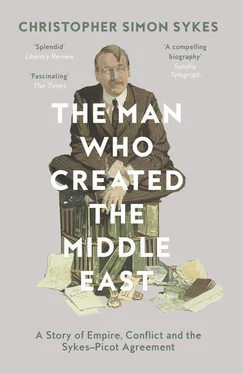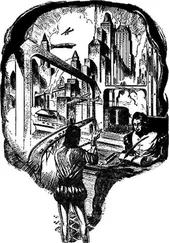1 ...6 7 8 10 11 12 ...20 But not all was fun and games in Mark’s life, far from it. Tom Ellis wrote of ‘nightmare scenes amongst the grown-ups that faded as strangely as they began … Through these Mark walked quite steadily, with myself trailing dutifully in pursuit.’ 52The fact is that his mother’s behaviour was steadily deteriorating, and had been since the spring of 1887, when her lover, Lucien de Hirsch, had died suddenly in Paris of pneumonia, while she was in Damascus with Tatton. It had broken her heart, for in the short time she had spent with him she had had a glimpse of what life could have been like for her had she married a man of her own age and with her own interests. Both the knowledge of this and the loss of him proved too much to bear and she began to lose control. As part of a deal she had struck with Tatton before setting out on their last trip to the Middle East, that she would stay with him in Palestine as long as he wished, he had agreed to take a lease on a London house for her, 46 Grosvenor St. This is where she retreated when she returned home and where she was to spend more and more time in the years to come. Away from ‘the Alte’ and with a healthy disrespect for the conventions of society, she attempted to drown her sorrows in a hedonistic lifestyle. Soon the grand ground-floor rooms of this impressive Mayfair house were filled with the scent of cigarette smoke – smoking was a habit forbidden at Sledmere – and the sounds of merry-making, dominated by the rattle of the dice and the clink of the bottle, two vices to which Jessie was to become increasingly addicted.
There were more lovers too, mostly dashing army officers who took advantage of her generosity and did nothing to improve her state of mind. As her drinking increased, so did her indiscretions, until the vicious gossips and jealous spinsters of London drawing-rooms were whispering in each other’s ears with undisguised pleasure the new name coined for her by one of the wittier amongst them. To them she was no longer Lady Tatton Sykes, but Lady Satin Tights. ‘Nevertheless,’ she had written to Cardinal Manning in 1882, ‘I have … a real reverence for goodness and wisdom … and a desire … to try and utterly abandon my sinful and useless life.’ 53She did not give up the struggle. Society may have laughed at her behind her back, but amongst the poor and needy she was revered and blessed with a kinder nickname – ‘Lady Bountiful’. When she was at Sledmere, much of her time was spent in daily visits to dispense food, clothing or money to families in need, while in Hull, where slum housing and conditions for the poor were particularly bad, she was something of a heroine. She was known particularly for her work on behalf of poor children, and Lady Sykes’s Christmas Treat, for the Catholic children of Prynne Street, had become an important annual event. ‘I gave a Tea in Hull for the children of the Catholic School,’ she had written to Lucien on 31 December 1886, ‘which lasted from midday till 6.30 … There were 520 children, and I was carving meat for three hours. I think they enjoyed themselves poor things. Certainly they were very poor and 21 boys and 1 girl amongst them had no shoes or stockings, and in this bitter weather too. We made a huge sandwich for each child and gave them besides various mince pies and cakes. It was a great pleasure to me.’ 54
Nor was her charity confined to Sledmere. She lived at a time when philanthropy was almost a social imperative and in London there was no shortage of directions in which she might turn her attention. Her particular interest was the Catholic poor in the East End, mostly Irish immigrants who were flooding in to look for jobs which were better paid than back home, or at least thought to be so. In they swarmed into the cheapest and already most overcrowded districts, creating appalling slum ghettoes from which it was difficult for them to escape. ‘Whilst we have been building our churches,’ thundered the author of a pamphlet entitled The Bitter Cry of Outcast London , ‘and solacing ourselves with our religion and dreaming that the millennium was coming, the poor have been growing poorer, the wretched more miserable, and the immoral more corrupt.’ 55It was typical of Jessie to combine her social life and her charity work in a flamboyant style and she would often astonish people by leaving a party in full swing and going straight to the East End to dispense soup. Still dressed in her ball gown and sparkling jewels, she appeared to the homeless like a fairytale princess.
Though she now led a life which was increasingly independent from her husband, Jessie was still Lady Sykes and she continued to play that role as she was needed, acting, for example, as Tatton’s travelling companion. She accompanied him to Russia in 1887, India in 1888 and Egypt in 1889. Her powers of flirtation remained undiminished and each trip netted her new admirers. In Russia a General Churchyard fell under her spell. In India, two young men, Richard Braithwaite and David Wallace, were rivals for her love, but it was in Egypt that she came closest to finding again the happiness she had felt with Lucien when she embarked on an affair with Eldon Gorst, a young diplomat and rising star in the Foreign Office who had been assigned to the British Consulate-General in Cairo. For two years they conducted a passionate relationship with periods of great happiness interspersed with the heartbreak of separation. There could be no future in their union, which, when it finally broke up, left them both heartbroken. Jessie was inconsolable.
Aged thirty-six, her sadness compounded in April 1891 by the death of her beloved father, she felt her life was beginning to cave in on her. Over the next two years, her drinking became heavier, her promiscuity more flagrant, and she began to haunt bookmakers’ shops and the premises of money-lenders, while those who cared for her looked on in horror, powerless to help, foremost amongst them her fifteen-year-old son.
Chapter 2
Trials and Tribulations
Watching his mother’s slow deterioration was extremely difficult for Mark, and for the first time in his life, he began to dread her visits to Beaumont, fearing that she would be begging him to intervene on her behalf with his father, or, worse still, that she would be drunk. ‘I can still see Lady Sykes,’ recalled Henry Dickens, ‘descending on Beaumont like a thunderbolt, entering into tremendous fights with Father Heathcote, the then and equally pugnacious rector.’ 1At home he felt increasingly isolated, having no one to whom he could really turn. His tutor, ‘Doolis’, had left, as had his replacement, Mr Beresford, and his worries about Jessie were not the kind of thing he would have discussed with Grayson or any of the house servants. He began to spend more and more time with his terriers, the pack of which numbered six, and he took comfort in eating, which caused his weight to balloon. Then just at a time when he was at his most vulnerable, he formed a new friendship, in the form of the nineteen-year-old daughter of his father’s coachman, Tom Carter. Alice Carter, whose father had come to Sledmere from the neighbouring estate of Castle Howard, was anything but the ‘village maiden’. Tall, good-looking and stylishly dressed, she had a job as a teacher in the village school, and when she met Mark up at the house stables, he immediately captivated her. To an intelligent and literate girl such as her, who had seen little of the world, he was a romantic figure, fascinating her with tales of his travels through the Ottoman Empire, and impressing her with his fluency in Oriental languages. She also saw that he was very lonely.
Mark took Alice for walks with the dogs, rode with her, showed her all his favourite places in the park and in the house, and they spent many happy hours in the Library, where he showed her his best-loved books and read her stories from the Arabian Nights. He gave her a present of an inkwell made from the hoof of a favourite pony he had had as a child. A strong attraction soon developed between them, the eventual outcome of which was the consummation of their affair, in Alice’s recollection, on the floor of the Farm Dairy. 2The romance lasted long enough for them to plan to elope to London, which they managed to accomplish for a short while. To keep such an affair secret in a tight-knit community such as Sledmere was, however, impossible, and gossip meant that they were soon tracked down by Jessie and forcibly separated, leaving them both distraught.
Читать дальше











